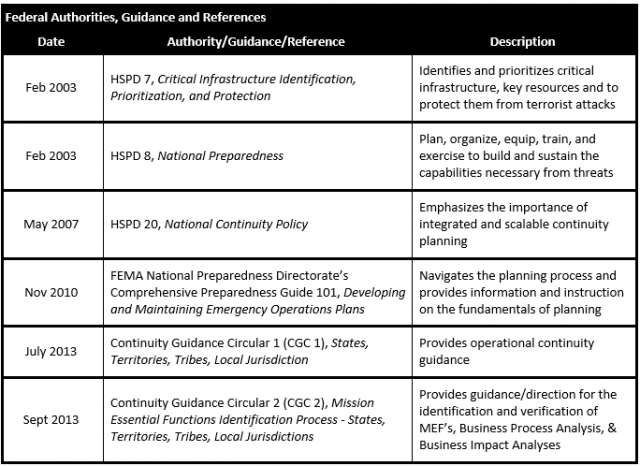User login
Navigation
Continuity of Operations Program
In general, we rarely get a head's up that a disaster is ready to strike. Even with some lead time, every incident is unique and can unfold in unexpected ways. This is where a Continuity of Operations Plan (COOP) comes into play at the University of North Texas. To give each department the best shot at success during a disaster, this useful resource needs to be current and tested by all personnel who are responsible for carrying out any portion of the plan.
Phases of Emergency Management
The most widely adopted model of emergency management activities describes the phases of emergency management in four phases: mitigation, preparedness, response, and recovery. This model was adopted by the Federal Emergency Management Agency (FEMA) in the early 1980's soon after the agency was established. As continuity planning has become recognized as part of the emergency cycle, it has been placed as a core activity. Response and recovery activities must be supported by effective mission continuty planning to ensure the university activities can respond to and from emergencies and disasters.
Continuity planning focuses on the planning efforts needed to maintain the university’s critical functions, to quickly resume business functions, and remain operational during and following disruptive incidents in the event of a fire, flood, epidemic illness, a malicious attack on the internet, etc. The COOP improves the University’s chances of minimizing losses by outlining procedures and instructions each critical essential function must follow in the face of such disasters. The document includes business processes, assets, human resources, business partners and more.

What if we don't have a plan?
Lacking a plan doesn't just mean your department will take longer than necessary to recover from an event or incident, but loss of life or resources could occur. You may encounter resource shortages, recovery delays, and even excessive costs. If we are able to anticipate and manage incidences, we will be able to resume critical functions and services quickly. The emergency management phases of response and recovery efforts will be much quicker, smoother, and inexpensive. The diagram below illustrates the relationship between Better Outcome, Planned Outcome, and Worse Outcome.

Purpose
The University of North Texas is committed to the safety and protection of its employees, students, operations, and facilities. The University has critical operations that must be performed and must rapidly and efficiently resume during an emergency. The changing threat environment and events has raised awareness for the need of a COOP that will enable us to continue the performance of essential functions by utilizing an all-hazards approach. By planning for operations under such conditions, we plan to mitigate the impact of the incident on our community, our facilities, and our mission. We will continue essential functions during an emergency to:
- Sustain the safety and welfare of University employees, students, and visitors
- Maintain critical business, finance, and infrastructure operations
- Deliver academic programs
- Preserve critical research
- Maintain health services
At the University of North Texas, the campus operates under an overall strategy of creating a 'culture of safety' institutionalizing and sustaining the concept of emergency and crisis management. While all crises are different, most events follow the timeline illustrated below. Depending on the event, some phases may be shorter or longer.
Continuity planning is an on-going, comprehensive process to ensure critical functions will continue operations and services. The overall goal of continuity planning is to reduce risk and minimize disruption of campus research and academic programs resulting from a negative event. Each phase following a crisis will overlap one another for continuous operations.
Scope
The University of North Texas must be prepared to ensure the continuing performance of critical functions under all conditions, including emergencies disrupting normal operations. This capability depends on effective continuity planning that identifies critical functions, personnel, facilities, and other resources required to continue delivery of those functions; and to ensure those resources will be available when needed through coordination with partners and stakeholders.
Methodology
The University of North Texas aligns its methodology in the development of actionable Continuity of Government Plans with:
- State Office of Risk Management
- Texas Office of Homeland Security
- Texas Division of Emergency Management
- Texas Department of Information Resources
The University's COOP aligns its procedures with Texas and Federal Statutes outlined below:


